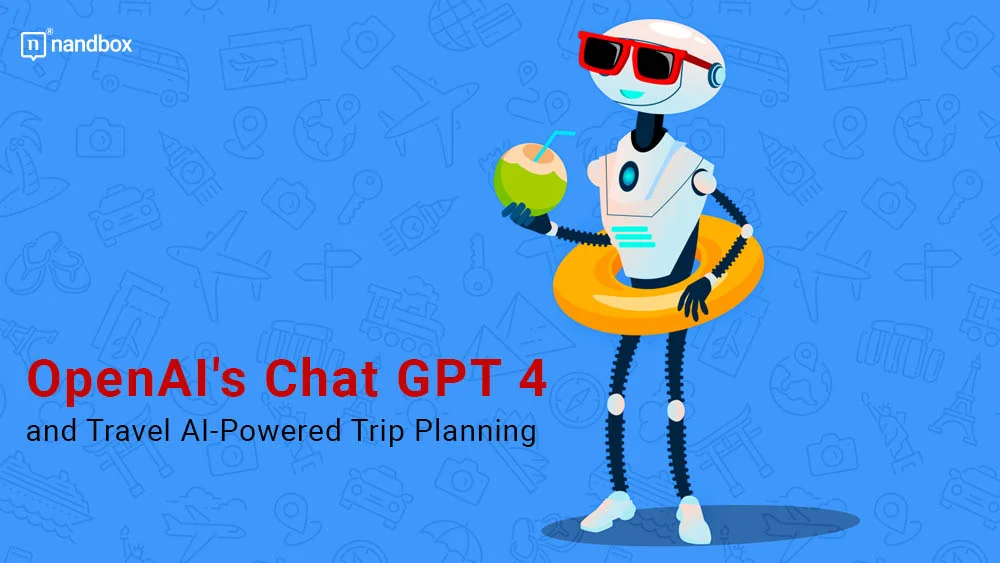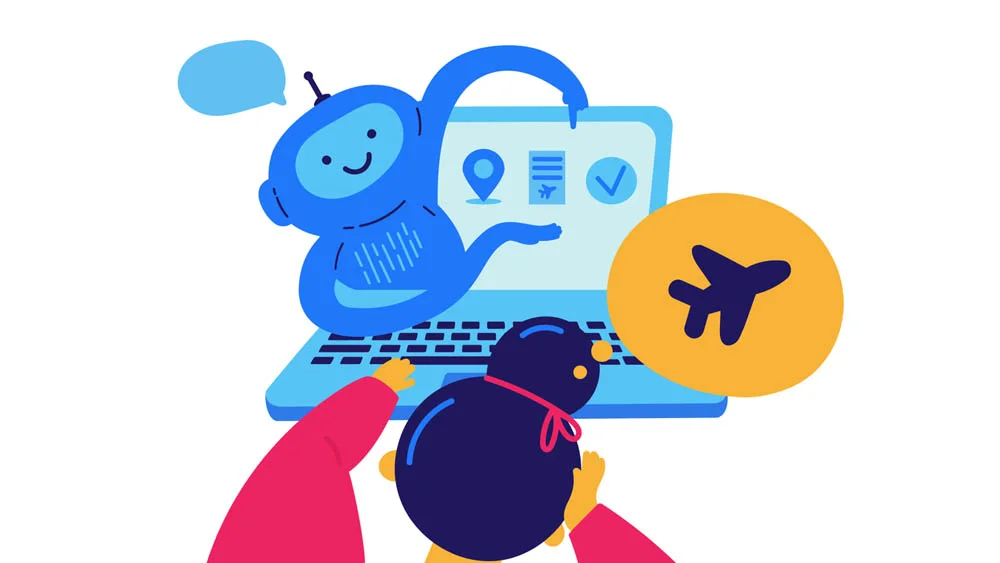OpenAI Chat GPT 4 and Travel: AI-Powered Trip Planning
Most people hadn’t heard of Chat GPT before it launched GPT 3.5 back in November. It’s one of those cases where a new technology appears out of thin air and becomes a part of our reality. With OpenAI releasing GPT 4 last March, its popularity is only increasing. It’s only a matter of time until it becomes a tool we practically use daily. One of the things we will probably use it for is trip planning and travel assistance. Here’s how Chat GPT might affect the future of travel.
Open AI Chat GPT and How It Works
Chat GPT is a chatbot at its core. Its function is to answer prompts and questions about any topic you can imagine in a natural, human-like way.
GPT stands for generative pre-trained transformer; it’s an AI-powered generator that got pre-trained on an enormous amount of text corpus and is based on the transformer architecture—a deep learning model. It utilizes NLP to understand the questions and prompts.
Users can ask Chat GPT to explain quantum physics to a 12-year-old, translate a document from Mandarin to Russian, or write a poem about oranges in the style of T.S. Eliot. It has other applications, like debugging code, generating design ideas, and writing essays and emails. It can also write, summarize, or simplify any report.
In November 2022, OpenAI released GPT 3.5, which, advanced as it was, had limited interpretability. In March 2023, the company released the more advanced and mind-blowing GPT 4.
How Can OpenAI GPT 4 Help Travelers?
Traveling to a new country is fun but far from easy. Tourists could have trouble navigating the area and face language barriers. Here’s how GPT 4 can come to the rescue.
Trip Planning
Sometimes, a traveler has the money and time to go somewhere nice but is unsure of where to go. Or they know they want to take an Arizona tour and look for RV rentals in Phoenix, for example, but don’t know how to plan the itinerary. All they have to do is ask. GPT 4 can help them make complete plans, including their budget, prices to pay, layovers, accommodations, and landmarks. If the users ask the right questions, they will get helpful answers.
For example, you could say: “I want to plan a trip to Turkey in July. What are the available flights?” or “I don’t know where to go in Rome.” or “What are some cheap hotels in Lisbon?”
The first answer will provide flight details, the second; an itinerary of a day spent in Rome, and the third; a list of accommodation recommendations.
Recently, the infamous Expedia launched a Chat GPT-powered travel planner. That combines the existing Expedia tools with the chatbot to help travelers find their perfect trip.
Tour Guiding
GPT can help tour guides gather information, study locations, and enhance their guiding skills. That way, they can be of great assistance to tourists. And for sure, travelers can ask the chatbot directly if they have any questions regarding an artifact or location of significance.
Museums can take advantage of this, integrating text-to-speech services to help tourists listen to the rich history of the country they’re visiting or recount the historical significance of a monument or artifact.
Now that GPT 4 can analyze images, they can use that too to get information about a location or monument (if they’re allowed to take pictures).
Translation
Languages are great barriers that travelers face. With GPT 4, they can write any text in any of the 95 supported languages and get an adequate translation. If they encounter a sign they can’t read because of the letters or characters, they can take a picture and ask for a translation. It’s similar to Google’s Lens service and Google Translate. However, GPT 4’s service is much more advanced in translation and image analysis.
Advantages of Using OpenAI’s GPT 4 in the Travel Industry
Aside from how it can help travelers, many companies, like the aforementioned Expedia, are looking to integrate GPT with their tools and reap its benefits. Here’s why:
- Data analysis: ChatGPT can analyze massive amounts of information, including customer interactions and booking history, to draw conclusions and make predictions. Travel companies can use this information to set prices, run promotions, and confidently brainstorm new products.
- ChatGPT can be used to make and send personalized email marketing campaigns in minutes. As a result, tour and activity providers may attract a wider variety of customers and see an increase in bookings.
- Tour and activity providers can use ChatGPT to gain insight into the kinds of tours and activities that are most popular by analyzing customer feedback and preferences. New products and enhanced versions of existing ones can be created with the help of this data.
- ChatGPT’s ability to automate numerous mundane tasks means that tour and activity providers can serve a larger customer base without hiring more employees.
- In the travel business, using OpenAI’s GPT-4 enables intelligent chatbots to provide better customer care, real-time language translation, and customized trip planning. Moreover, video GPT can produce interesting trip videos that improve customer engagement and marketing campaigns.
- Personalization allows the customers to have a better experience, enjoy their travel time and become loyal to the company.
- Answering frequently asked questions and assisting with bookings are just two examples of how ChatGPT can be used to improve customer service. There will be less work for customer service reps and happier clients as a result.
Possible Disadvantages
- While GPT 4 is smarter and more accurate than GPT 3.5, it still encounters hallucinations and biases. Both can be problematic when dealing with travelers. Imagine using racist language in a foreign country. It’s not an ideal situation.
- GPT lies. Recently, it manipulated a human into solving a captcha by lying to it. It can be a scary tool unless you fully trust the developers.
- So far, GPT 4 can’t access the internet, so the information it gives is a couple of years outdated.
Unlike GPT 4, we would never lie to you. Full transparency is something we practice at nandbox Inc. Believe us when we say that our native no-code app builder will help you create the app of your dreams effortlessly. Sign up for the free trial now!








